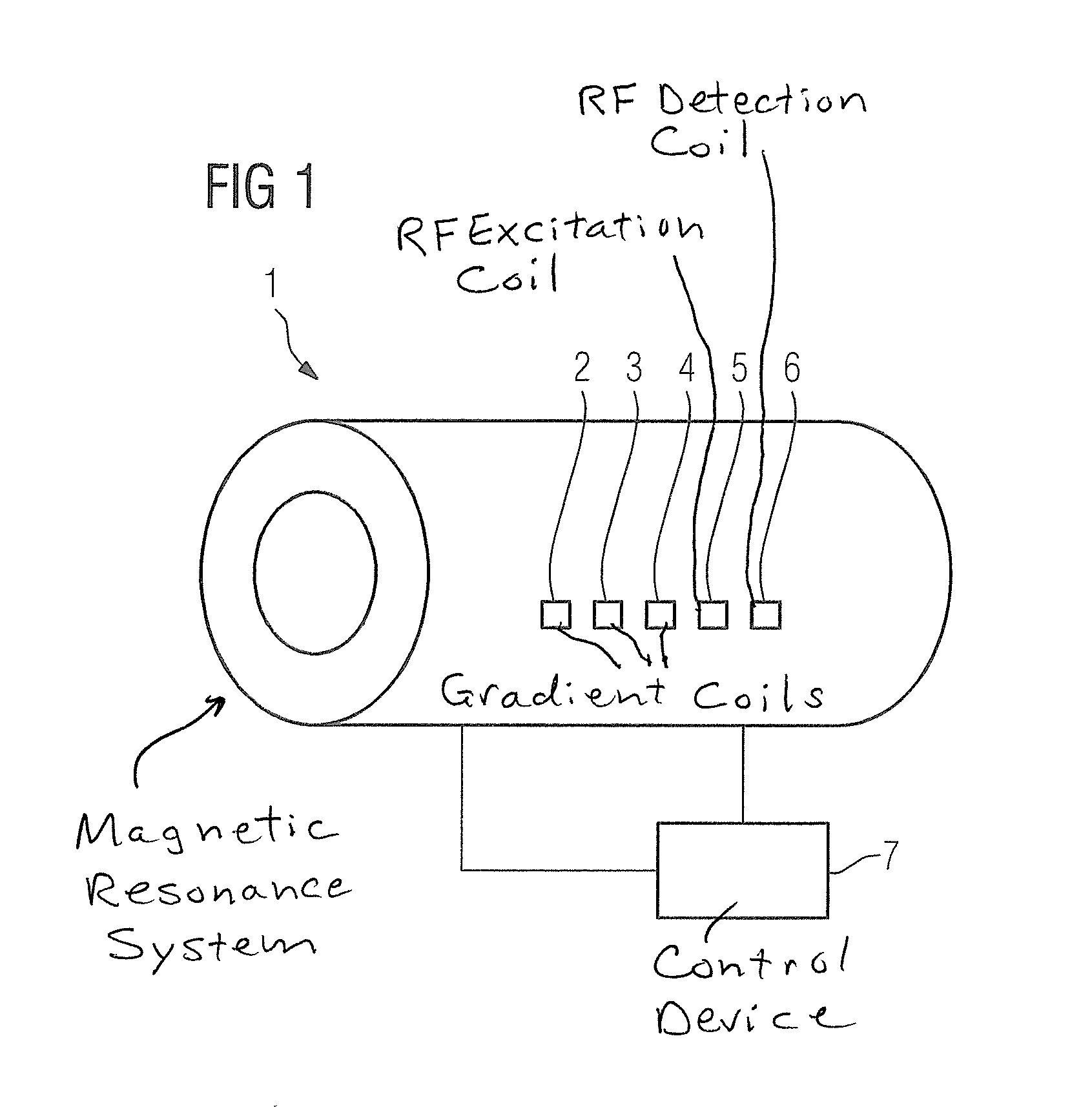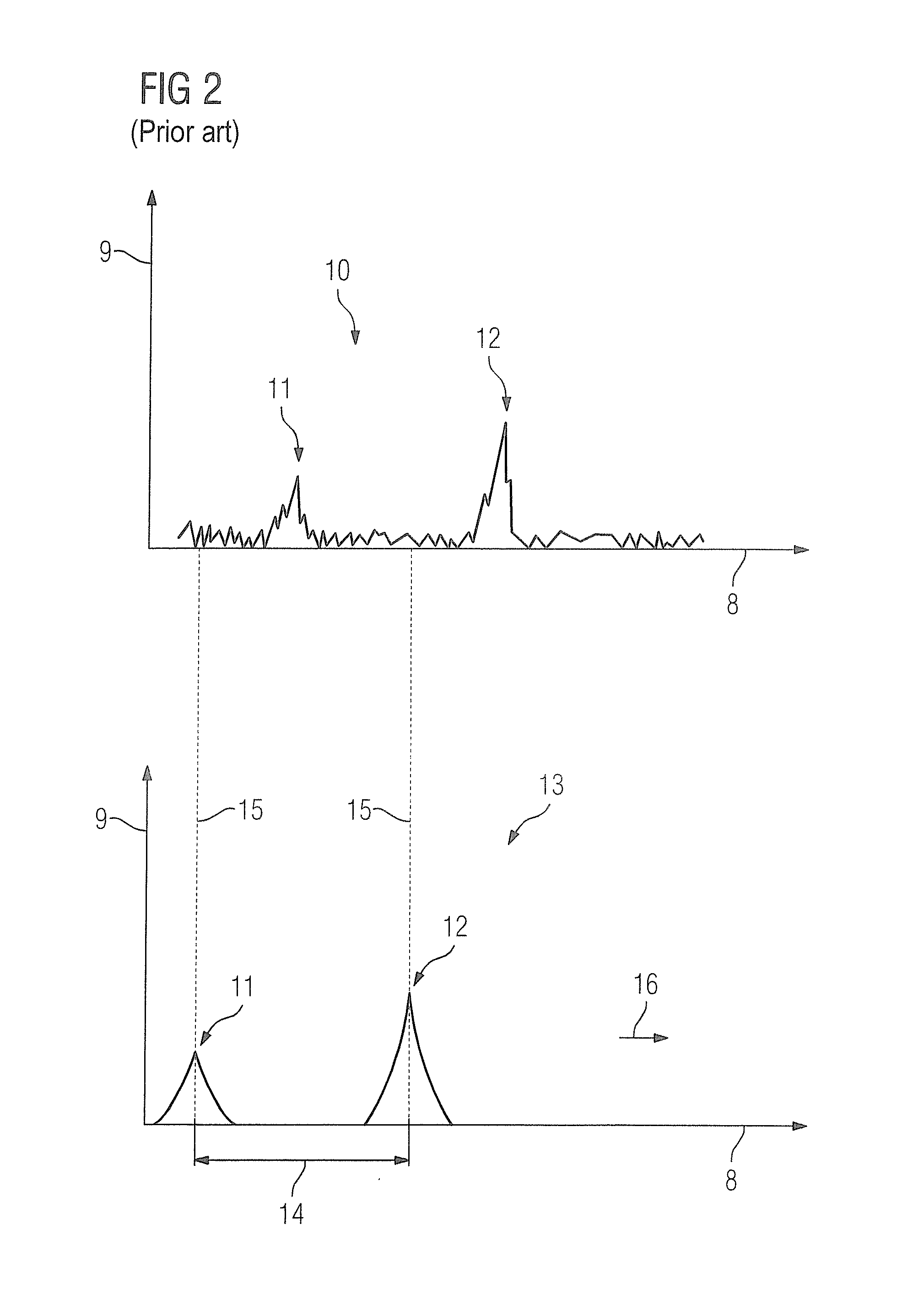Automated determination of the resonance frequencies of protons for magnetic resonance examinations
a technology of magnetic resonance examination and automated determination, which is applied in the direction of magnetic measurement, measurement using nmr, instruments, etc., can solve the problems of high computational workload and achieve the effect of less computational workload
- Summary
- Abstract
- Description
- Claims
- Application Information
AI Technical Summary
Benefits of technology
Problems solved by technology
Method used
Image
Examples
Embodiment Construction
[0042]FIG. 1 shows a magnetic resonance system 1 having three gradient coils 2, 3 and 4, two radiofrequency coils 5 and 6, and a control device 7. For clarity of illustration, other components of the magnetic resonance system 1, such as the patient table, are not shown. In this example the radiofrequency coil 5 is embodied as an excitation coil, and the radiofrequency coil 6 as a detection coil. The radiofrequency coil 6 is in this case usually tailored to fit specific sections of the examination subject, for example as a “head coil”, “chest coil” or “knee coil”. The radiofrequency coil 5 is also called a “body coil” and is less sensitive than the radiofrequency coil 6, but homogeneous over a greater area. This subdivision of the radiofrequency coils is typical in the case of magnetic resonance systems 1 in the medical field, but not in the case of devices having bores in the range of several centimeters or up to approx. 30 centimeters, where the same radiofrequency coil is often us...
PUM
 Login to View More
Login to View More Abstract
Description
Claims
Application Information
 Login to View More
Login to View More - R&D
- Intellectual Property
- Life Sciences
- Materials
- Tech Scout
- Unparalleled Data Quality
- Higher Quality Content
- 60% Fewer Hallucinations
Browse by: Latest US Patents, China's latest patents, Technical Efficacy Thesaurus, Application Domain, Technology Topic, Popular Technical Reports.
© 2025 PatSnap. All rights reserved.Legal|Privacy policy|Modern Slavery Act Transparency Statement|Sitemap|About US| Contact US: help@patsnap.com



